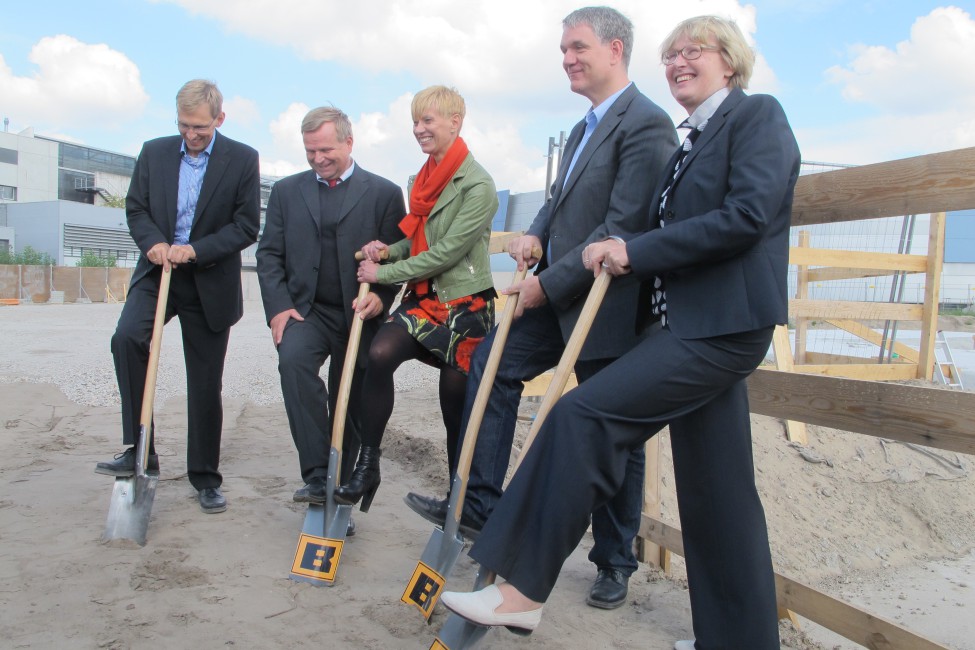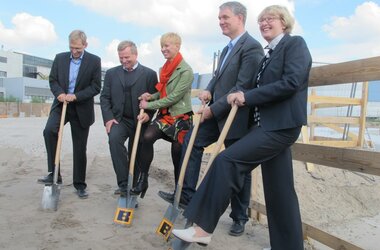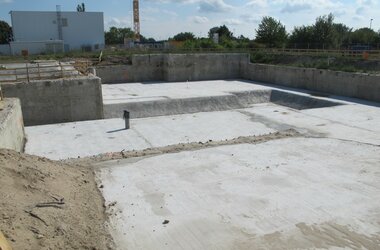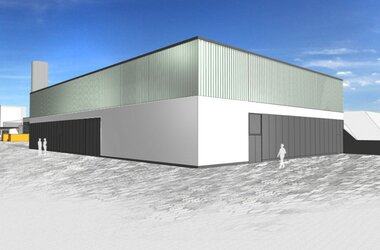Ground-breaking ceremony at bERLinPro
On 10.09.2015, the symbolic "first cut with a spade" took place at the building shell that is to accommodate the first testing facility in the world for a linear accelerator with energy recovery (ER). The fundamental practicality of this trend-setting technology is being investigated here in Berlin with the collaboration of international research partners.
On 10.09.2015, the symbolic "first cut with a spade" took place at the building shell that is to accommodate the first testing facility in the world for a linear accelerator with energy recovery (ER). The fundamental practicality of this trend-setting technology is being investigated here in Berlin with the collaboration of international research partners.
All the components for the accelerator equipment were developed by the Helmholtz Zentrum Berlin (HZB).
All the designers and engineers involved, and also KREBS+KIEFER, were personally thanked for their tremendous commitment during the design and engineering of this highly complex and technologically unique project.
Our structural engineering work and the structural physics aspects were particularly complex. The radiation requirements and those of the physicists as users and developers of the testing facility were taken into consideration alongside architectural and technical considerations.
The accelerator building is being constructedin an already completed trough construction.
To comply with the extreme radiation protection requirements, the plans included huge components, heavy concrete with hematite as the aggregate, and covering the structure with an approximately 3-metre high mound.
The technical hall, connected with the accelerator building by an underground passage, contains functional rooms in which evaluation, study and research work will be carried out in future.
The building is expected to be completed at the end of 2016, and from 2017 the scientists from HZB will start installing the ER components.



